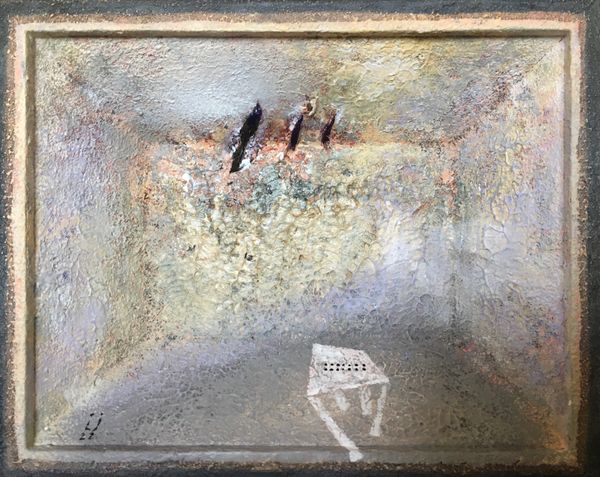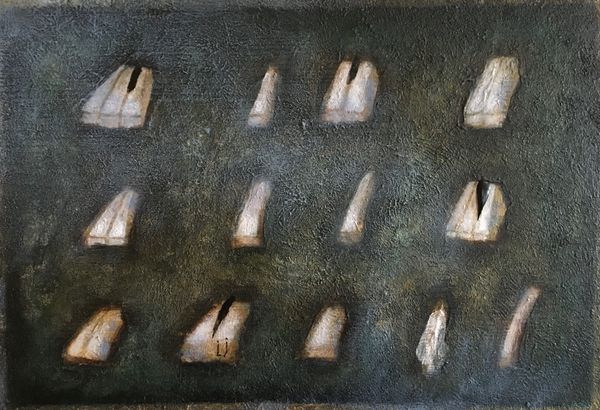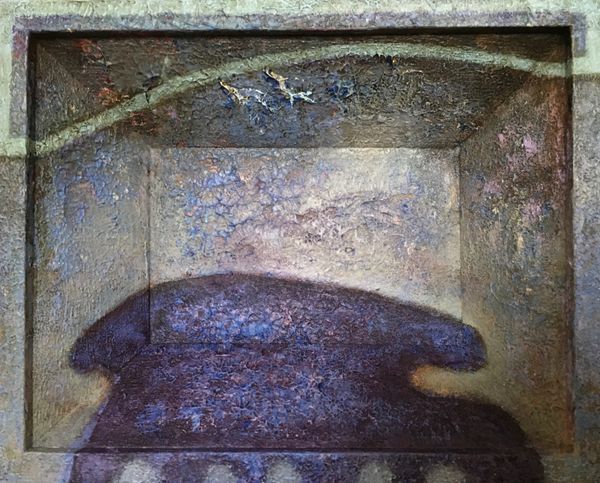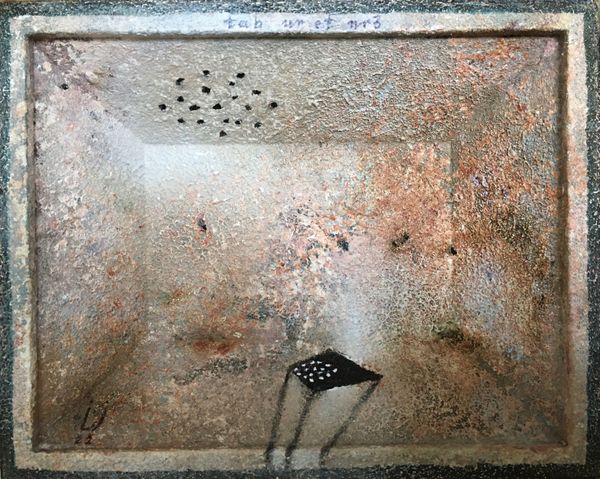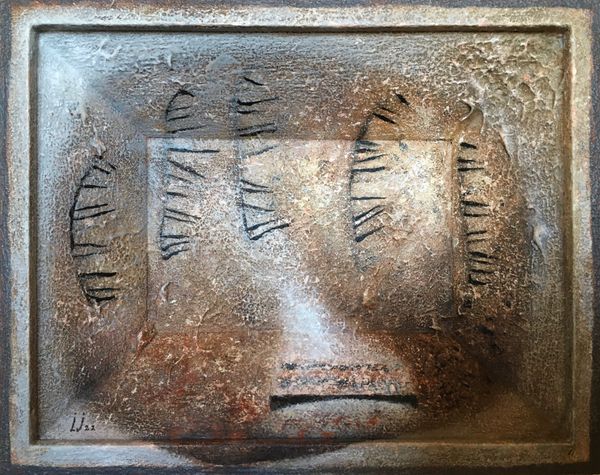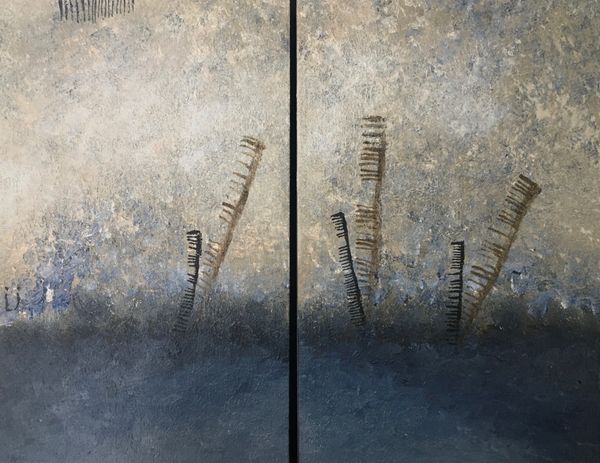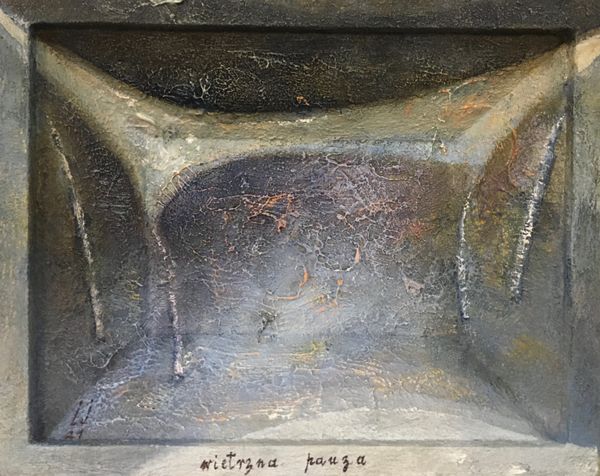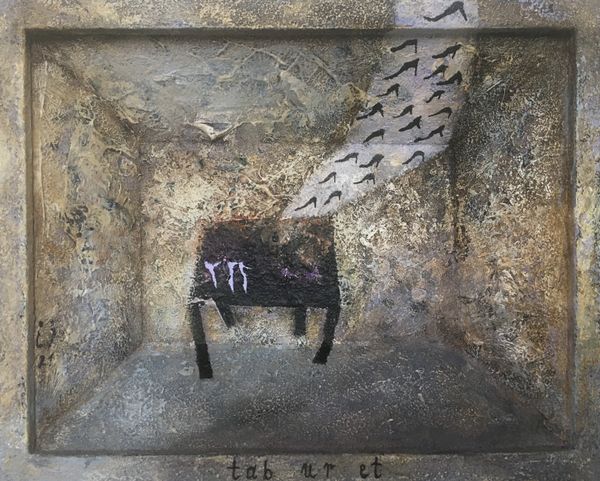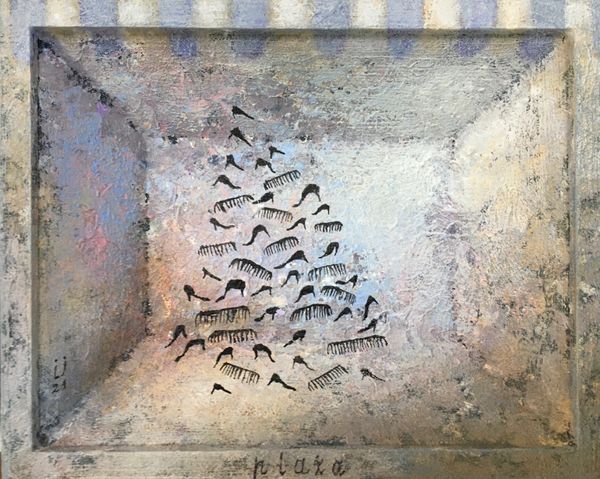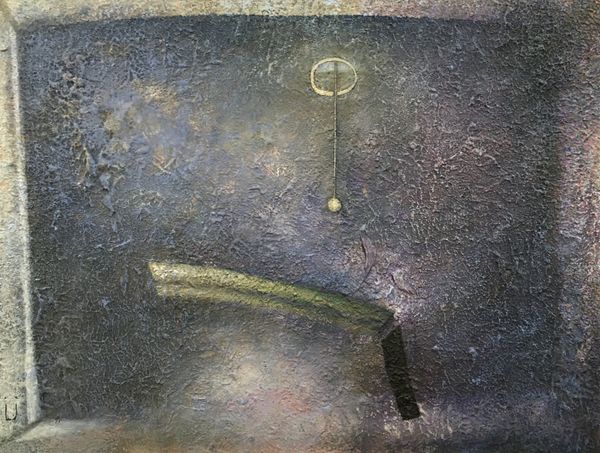
mixed-media, painting, architecture
#
mixed-media
#
contemporary
#
water colours
#
painting
#
sculpture
#
geometric
#
mixed media
#
watercolor
#
architecture
Dimensions: 19 x 24 cm
Copyright: Lech Jankowski,Fair Use
Curator: Looking at Lech Jankowski’s “La luminosa stanza del Maestro Piranesi” from 2022, rendered with mixed media, primarily watercolor, it strikes me how he builds a conversation across time with the artistry of Piranesi, but through a thoroughly contemporary lens. Editor: My first impression is one of unsettling serenity. There’s a quietness, almost a stillness, evoked by the pale colors and the sparse arrangement of forms. The floating staircases immediately suggest a dreamlike space, divorced from earthly concerns. Curator: Precisely. Jankowski layers visual vocabularies; the architecture seems to hover in an abstract space, unbound from the usual expectations of depth and perspective. The floating stairways hint at impossible geometries, almost defying physical laws, creating an intriguing sense of disruption. One can argue, too, that the muted palette invokes a sense of history, a looking back to a period deeply shaped by colonialism and Western hegemony in artistic production. Editor: Stairways always strike me as powerfully symbolic – representing transition, aspiration, either ascent or descent, even in dreams. In this piece, disconnected from any ground, they imply unrealized potential. And then the title adds to it – placing them within a “luminous room” further heightens this sense of dreamlike possibility, although I must confess, this luminance seems almost eerie, veiled in shadow and obscurity. Curator: The very luminosity might point us to Piranesi himself, his engravings meticulously revealing and reconstructing Rome’s grandeur for later generations, informing a renewed vision that would, in its own time, exclude alternative and diverse voices. Jankowski perhaps critiques this selectivity, these gaps and voids, while also echoing a lineage, his relationship to the master being, ultimately, ambivalent and unresolved. Editor: The geometric forms—stairways, room, frame—almost vibrate, becoming visual mnemonics. What lingers isn’t so much the representation of a literal room, but a feeling, the reverberation of cultural memories summoned by these shapes. What does this place, rendered by a Polish artist in the 21st century, mean today? Curator: Indeed. In these liminal spaces, Jankowski captures our ever-evolving dialogues with art history, interrogating narratives to challenge our preconceived notions. Editor: Absolutely. Ultimately, it brings forth reflections about absence and memory as much as on Piranesi.
Comments
No comments
Be the first to comment and join the conversation on the ultimate creative platform.
